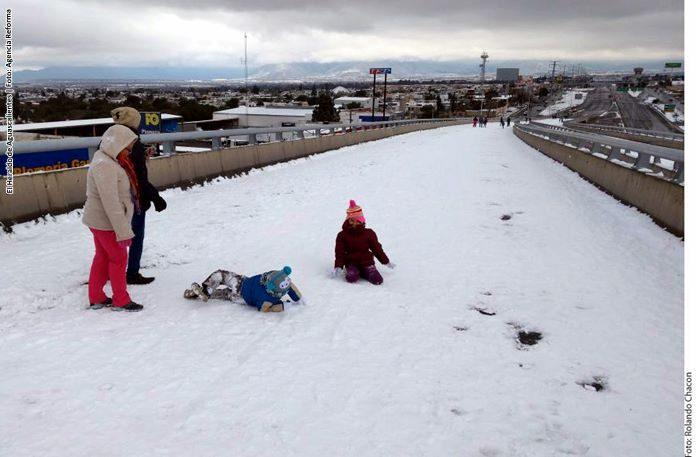The always capricious month of January finally rose in days gone by to let us see that it is indeed the king of winter. Without lowering the thermometers much in the Sierra de Arteaga, it allowed us to see again the beauty of the winter landscape in the Mesa de las Tablas area, where a slight fall of sleet put white specks on the varied greens of the bushes and pines.
I remember when, as children, we would return from school on icy afternoons, without feeling our feet, with wet shoes and socks on the verge of freezing. The girls did not wear pants then, but a short uniform with a skirt and long sleeves, the same for summer and winter, and the socks only covered below the knees. There was then no thermal clothing or the variety of materials that exist today to make clothing. The only advance in the clothing industry at that time was the famous "nylon", used mainly for stockings, socks and underwear, and in winter it was as cold as ice and very hot in summer. However, he came to help mothers, who previously spent many hours darning the cotton socks of their numerous offspring.
In 1886, Esteban L. Portillo published his "Anuario Coahuilense", a book that is now an important source of information of the time. Yesterday I opened its pages, moved by curiosity about what it says about the cold winter. I transcribe: “The strange configuration of the terrain of the state, and its distance from the pole to the equator, its greater or lesser elevation above sea level, is what really comes to determine the variety of its climate, making places located at a same latitude and at a very short distance from each other, are under the influence of different climates”. These are classified into: "cold lands, temperate lands and hot lands". The cold ones are at a height of 2,000 meters or more above sea level, the temperate ones are between 1,000 and 2,000, and the hot ones are less than a thousand meters high.

Go with Don Esteban! As I expected more, my unsatisfied curiosity led me to the last pages, where there is a curious calendar where the author recorded the saints and some ephemerides. I transcribe some corresponding to January:
“1841. To the south of the La Labradora Factory, Messrs. José Ma. Goríbar, Andrés Flores, Francisco Aguirre, Juan Rodríguez, Antonio Ma. Pérez, Crisanto Morales and Agapito Sánchez were assassinated by a party of Indians.”
“1867. At four in the afternoon it was presented in the Plaza de Armas at 1st. Coahuila Battalion the flag embroidered by the Misses. Refugio Carbajal, Mariana Rodríguez, Dolores García Carrillo and Luisa López del Bosque. The Governor of the State, D. Andrés S. Viesca, and Lic. D. Juan A. De la Fuente, on behalf of the ladies, presented said Flag to General Mariano Escobedo as Colonel of the Coahuila Corps”. (That military body is the one that went to Querétaro to liberate the country from French intervention, and fought bravely to wrest the government from Maximilian).
“1879. In a set of honor died in Piedras Negras squadron commander Agustín Zúñiga.
I immediately wondered how cold those brave Saltillans who died in the so-called "big Indian raid" would have felt; the deceased in the haul of honor in the north of the state and the ladies who put their extraordinary sewing arts at the disposal of the country, because surely they, daughters of distinguished Saltillan families, embroidered the beautiful preserved flag sitting in front of a fireplace fire still today in the Chapultepec Castle Museum, however, they attended his delivery in the Plaza de Armas to the brave Coahuilenses who defended the Republic in Querétaro.
Most likely, I concluded, all of them suffered the same cold that we feel today. That goes without saying. So is winter.


